6. Former Collegiate Church
Built from 11th to 14th century
Dedicated to St. Martin and St. Severus. The church
tower is part of the previous church, dating from the
11th/12th century. From 1225 until the 14th century
the church was newly constructed starting with the choir.
The construction history of the present-day third church starts 1225. From the apsis, still with the Romanesque form, construction was done in gothic style at the west facade, toward the predecessor church. Probably due to lacking funds, the original planning had to be abandoned, and the tower construction of the Romanesque predecessor from the 11th/12th century was incorporated into the newly-constructed building. The atrium construction and the storey addition of the tower construction followed until the end of the 14th century. Archbishop and elector Baldwin of Luxembourg (1307-1354) contributed significantly to the advancement of the construction.
The collegiate church dominates the image of the town. Its location takes us back to the time when the Maifeld belonged to the Roman Empire. After the conquest of Gaul in 50 BC and with the securing of the Rhine border under Augustus (31 BC-14 AD), a first settlement was established here, perhaps in connection with a military camp. It was surrounded by estates. The name "vicus Ambitivus (Ambitarvius)" has been handed down for this first settlement.
The burial grounds from the Merovingian period (6th-8th century) around the church indicate a continuity of settlement beyond the end of Roman rule. The first St. Martin's church probably already existed at the beginning of the 7th century at the time of Bishop Modoald (614/25 - c. 647/49). Saint Martin was the most important church patron for the Franks and the ruling Merovingians. There are no remains of this church.
The collegiate foundation belonging to the church had developed from a community of priests. These secular clergymen were to help build up a parish organisation on behalf of the Bishop of Trier.
After the relics of Presbyter Severus were transfer from Italy in 952, the church received a second patrocinium. The first mention of St. Severus as church patron alongside St. Martin was in 1052.
It was probably in connection with the transfer of the relics and the consolidation of the monastery community in the 11th century that plans were made for a new church.
With the consecration in 1103, this construction was essentially completed. At this time our church was called "basilica Sancti Martini in pago Meinfeldensi".
In 1225, the construction of the church we are standing in front of began.
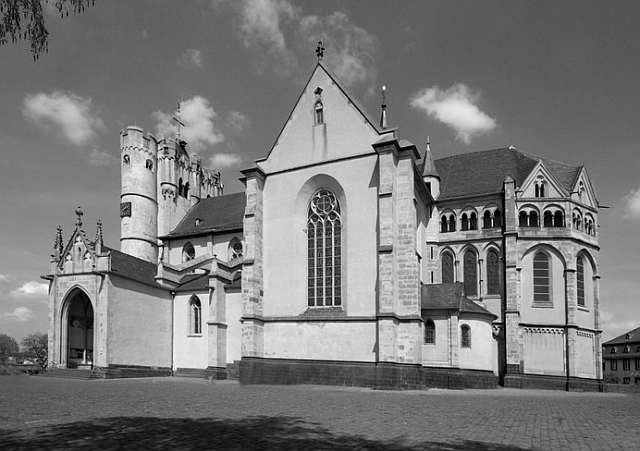
This new building was also preceded by a strengthening of the church's offer of salvation to the faithful. The knight Heinrich von Ulmen was a participant in the 4th Crusade 1202-1204, which ended with the conquest and plundering of Christian Constantinople. Knight Heinrich donated one of the relics of the cross he had brought back from Constantinople to the church.
In 1228, a "Holy Cross Altar" is mentioned for the first time.
It was a time of economic boom, which is why the building was planned very generously. Then came financial slumps and other focuses for the use of funds, probably primarily for the construction of the city wall. The nave had to be shortened by one bay and the west work of the previous church was retained.
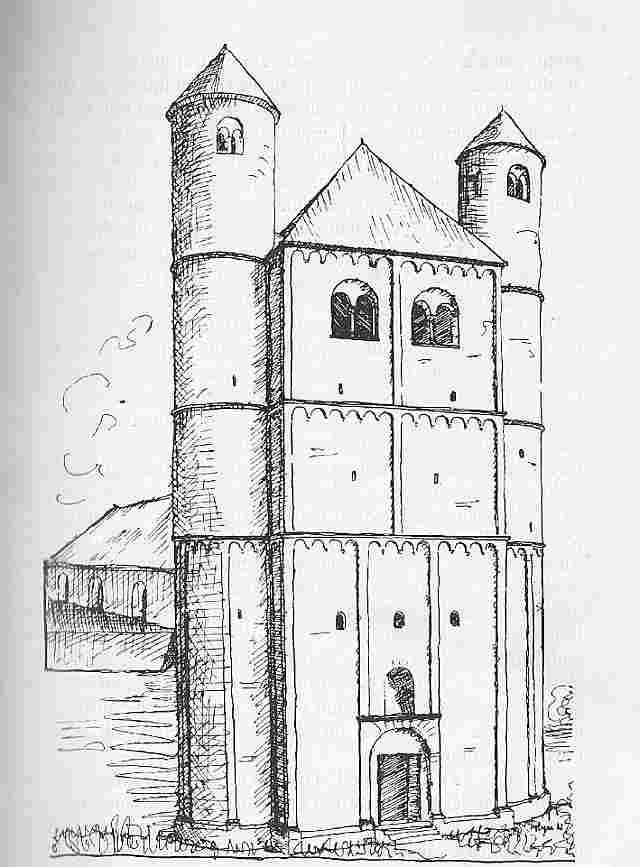
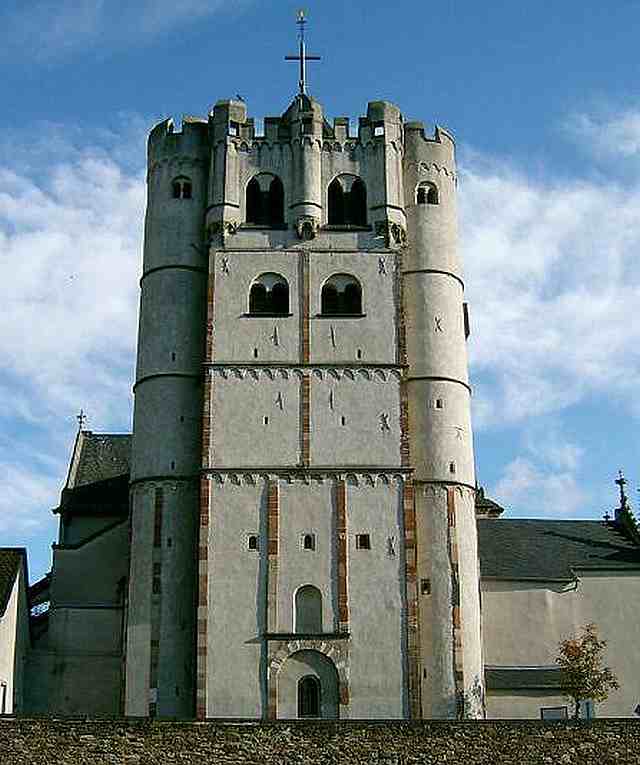
For a longer period of time, building activity stopped completely. A first partial consecration is said to have taken place by Archbishop Balduin in 1322. The building work, such as the raising of the tower inherited from the predecessor church and the construction of the porch, the paradise, continued until the end of the 14th century.
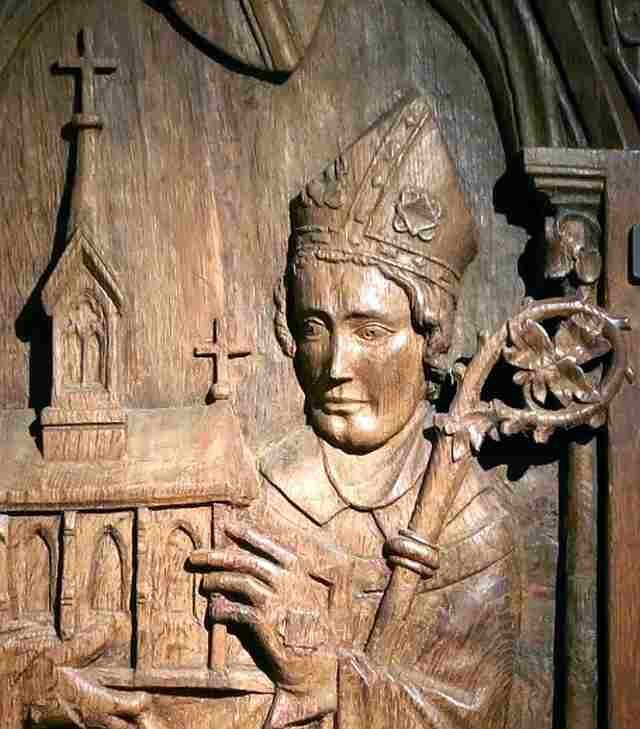
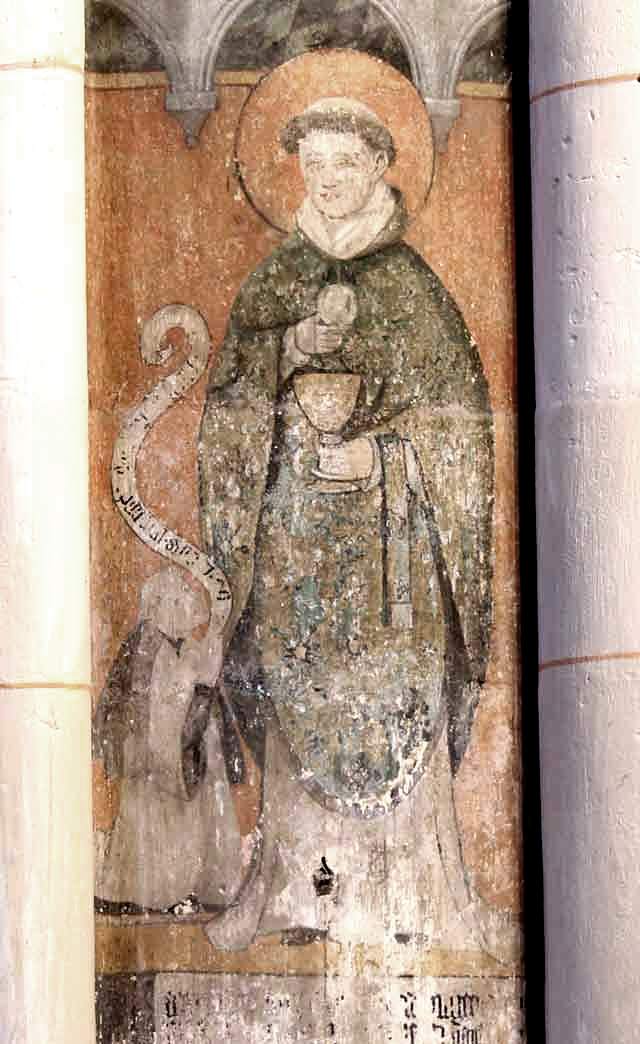
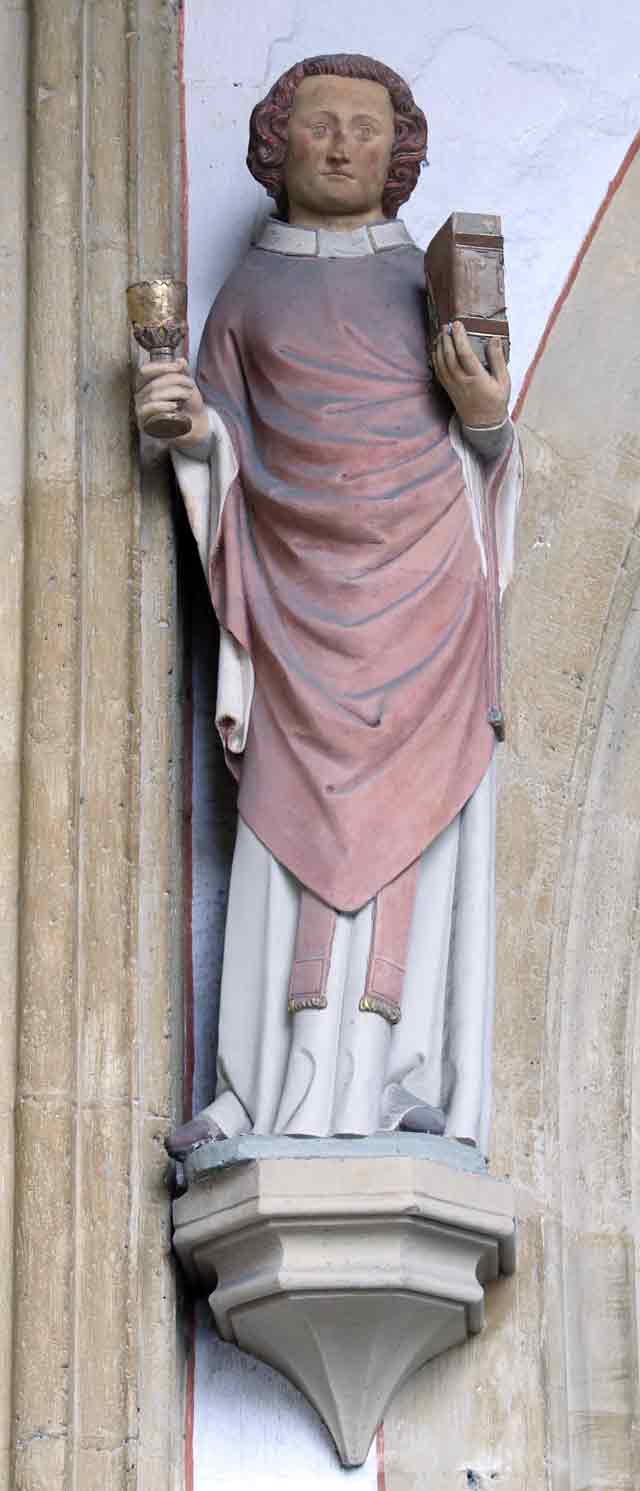
Since 1365, a rood screen, a stone barrier, separated the choir room reserved for the chapter from the rest of the nave. In 1518, the Antwerp gold altar was ordered, which we see again today as the main altar. With the wings open, 92 figures tell the story of salvation.
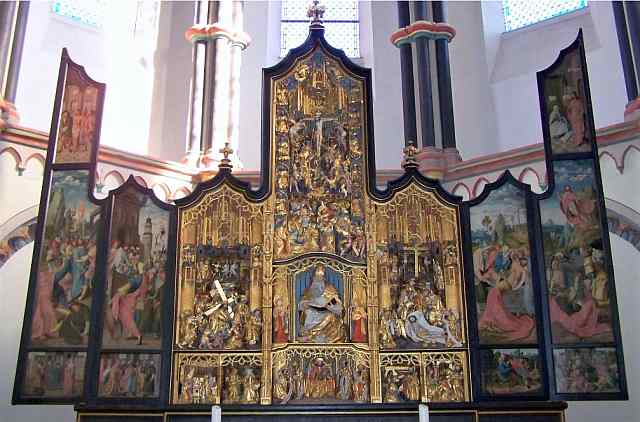
In 1722, a iron grille replaced the stone rood screen and in 1744 the gold altar was removed and a baroque altar was built.At the same time, the interior of the church was whitewashed. Together with the Baroque Stumm organ from 1722, the Romanesque-Gothic architecture was thus dominated by the Baroque.
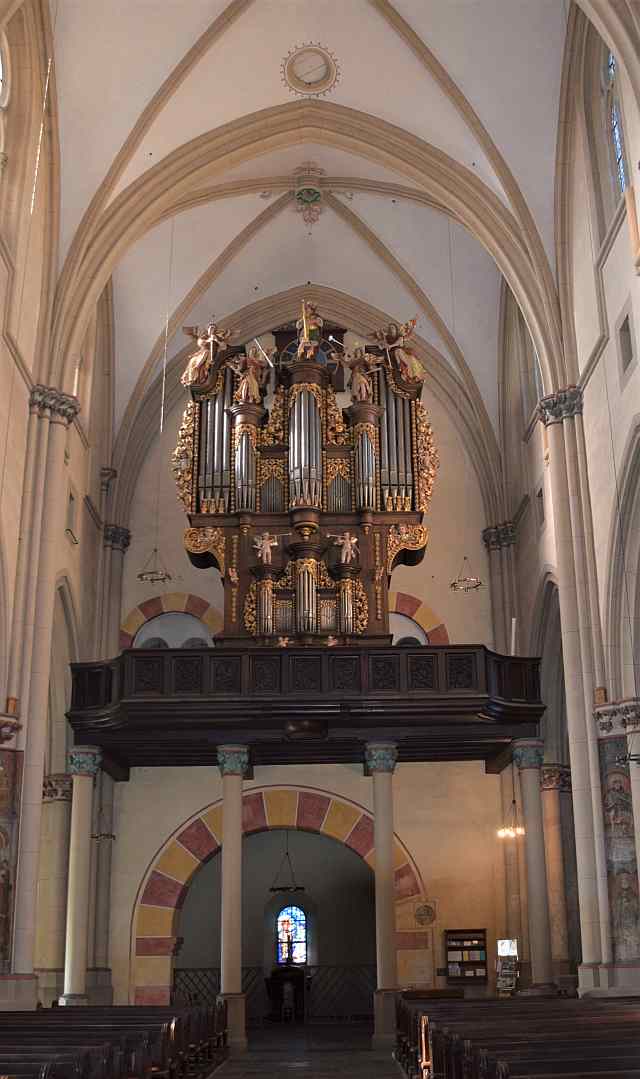
The baroque altar was largely dismantled again in 1791 and the remaining parts were repainted.
The statues of the saints, Martin, Severus, Hubertus, John the Baptist and the Madonna Assunta, which were part of the baroque altar construction, now stand in the right aisle and in the two side choirs.
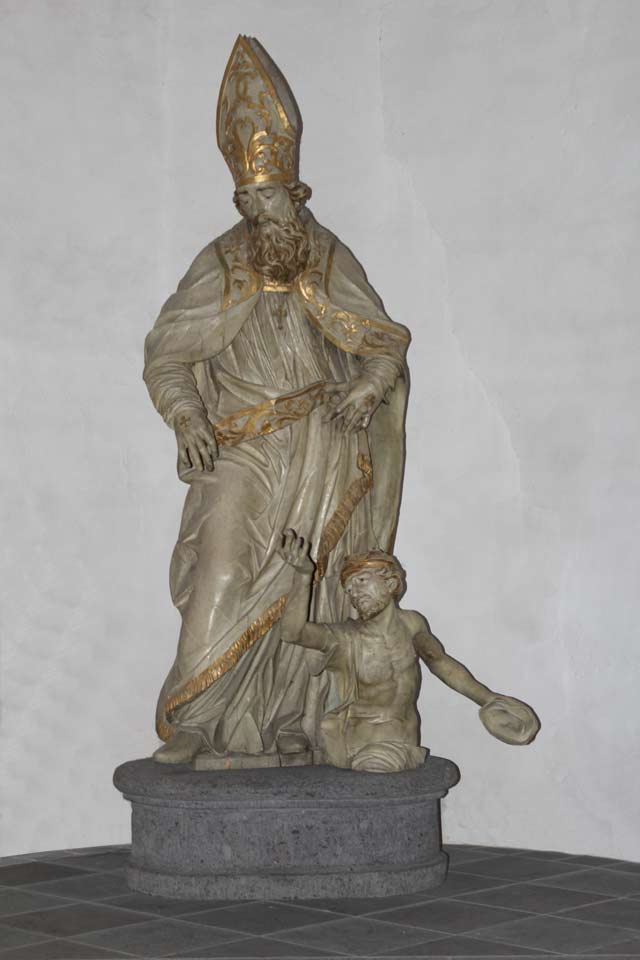
The abolition of the collegiate monastery in 1802, the return to the function of a parish church made the choir screen superfluous. It was auctioned off in 1808 and added to the outer wall to delimit the provostry.
In 1859/60, the remains of the baroque altar were dismantled and a neo-Gothic altar, with the 4 church fathers in the altar niches, was erected.
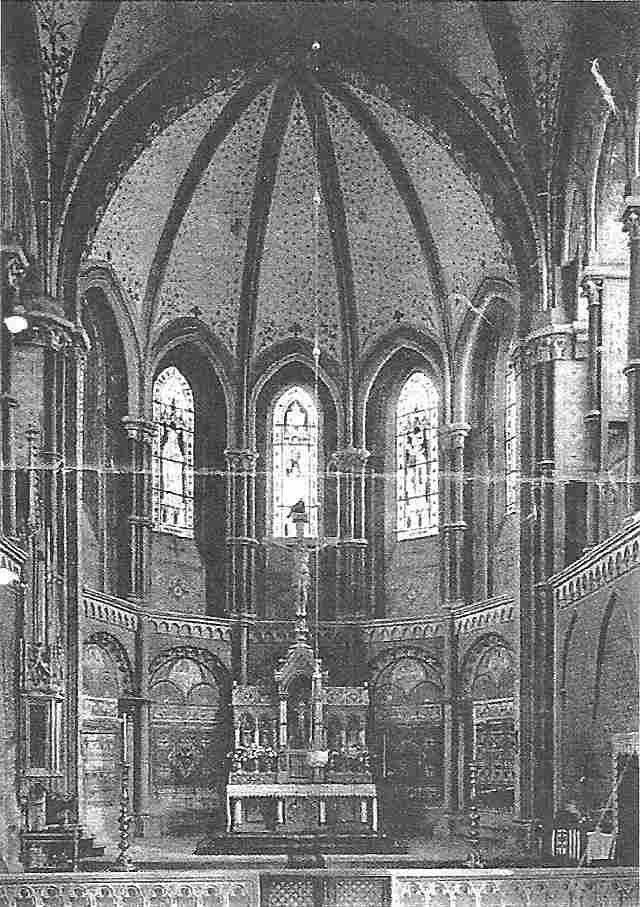
These figures have stood in the sacristy since the renovation of the church in 1931-1933. At that time, the gold altar, which had been removed in 1744, was also moved back into the choir as the main altar.
If we now enter the church, we turn towards the choir, walk forward a little to the transept and look to the left at the fresco of St. Christopher.
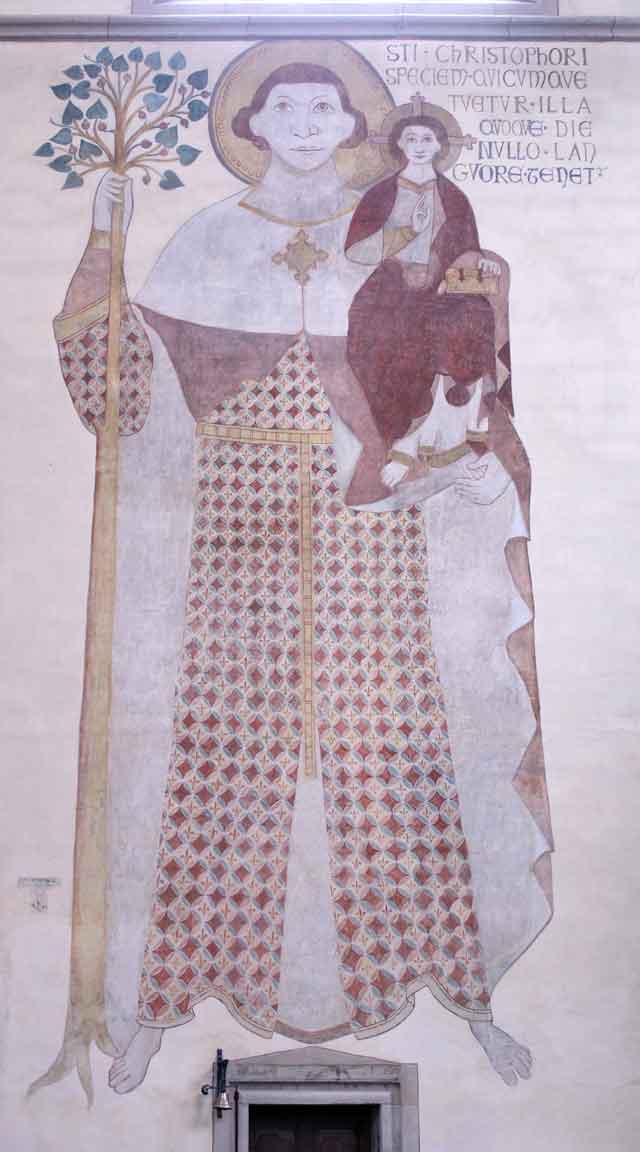
Here we linger for a moment, because we are promised: "Whoever beholds the face of St. Christopher, no evil will befall him on that day"
Glossary
Balduin
Archbishop and Elector of Trier (1307-1354). Balduin from the House of Luxembourg, brother of the German king and Roman emperor Henry VII. (1308-1313) was one of the most influential imperial princes in the first half of the 14th century. During his reign, Münstermaifeld became an outpost of the Trier archbishop's territorial policy. Thus the completion of the construction of the collegiate church was also a demonstration of Trier's presence vis-à-vis neighbouring Cologne. The reinforcement of the town fortifications confirmed the importance of the Münstermaifeld office in securing the archbishop's rule. The enforcement of the land peace protected urban development against encroachments by the nobility.
Christophorus
The over 8 m high Christophorus in the collegiate church carries the infant Jesus on his shoulders. The river landscape, which is part of the legend, is missing: In the middle of the stream, the giant Offerus gasped, "Child, you are so heavy, as if I had the weight of the whole world to carry!" The child replied, "As you say, so it is, for I am Jesus the Saviour. And as you know, the Saviour bears the burden of the whole world." When they reached the other shore, Offerus set the child down, whereupon the child said to him, "You have carried the Christ, from now on you may be called Christofferus.
Collegiate Abbey
The monastery was a community of secular priests. They did not belong to any order. The canons, also called canons, owned private property and did not take vows. They could leave the community at any time. Often the canonate was a purely honorary title or an additional source of income. Recommendations for admission as a canon came from the archbishop, the pope or even the king.
Church Fathers
This is the name given to the Christian authors of the first eight centuries who made a decisive contribution to the doctrine and self-understanding of Christianity and whose lives are regarded as sacred. In the West, Ambrose, Jerome, Augustine and Gregory the Great are known as the great Church Fathers. The figures of these four stood in the niches of the neo-Gothic altar of 1859.
Merovingian
The rule of the Merovingians as kings of the Frankish Empire, secured by Clovis, who converted to the Catholic faith in 496, lasted until 751. According to a document recognised as a forgery, Dagobert, king of the Merovingians from 623-639, would have confirmed to Bishop Modoald in 633 all rights and goods at the site of the church to be built. The foundation of St Martin's Church and the establishment of a community of priests are regarded as confirmed for the time of Dagobert and Modoald, irrespective of the document.
Modoald
He probably became Bishop of Trier in 614. He was important as the founder of monasteries and priestly communities. He was venerated as a saint in Trier from the end of the 9th century.
Severus
Saint Severus (6th century), not to be confused with Severus, who was venerated in Boppard and was Bishop of Ravenna in the 4th century, came from Antrodoco in the present-day province of Rieti. His relics were first brought to Trier by Archbishop Ruotbert (931-956) and from there years later via Hatzenport to the Maifeld. The legend that accompanied him is about the revival of a dead man who died without final consolation because of Severus' negligence. After the revival, Severus gave him the sacraments and was thus able to let him die in peace. Severus was regarded in the Maifeld as a helper and intercessor in cases of illness, famine and drought.
Stumm Organ
In 1723, the organ maker Johann Michael Stumm from Sulzbach built a new organ for the monastery, the fourth since the 15th century. The organ case (the front side) of this organ still exists today. The pipework was replaced in 1857/61 by the organ builder Ludwig Hünd. The Stumm family of organ builders built over 370 organs in seven generations from 1717 to 1907. Of these, 140 are still preserved today. The organ in Münstermaifeld was the second organ built by the Stumm family in this long line.



